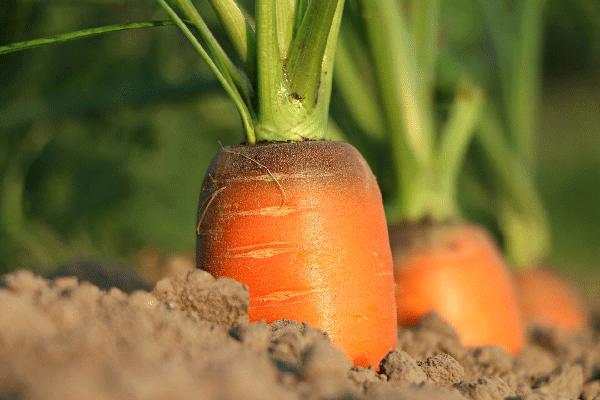Many gardeners are itching to get out and plant in the vegetable garden, but think that they have to wait until May to get the ball rolling. However, many of the crops we grow in the vegetable garden are adapted to cooler weather and can handle and even thrive when they are planted earlier in the season. Many of these cool-season crops are tolerant of frost and even light freezes.
Warm Soil, Cool-season Crops
These cold hardy crops typically fall into two different camps, those that require higher soil temperatures to germinate and those that are fine germinating in colder soils. The crops that require warmer soil temperatures are ones that we need to start indoors early, such as the Cole crops (cabbage, broccoli, cauliflower, kale, etc). These are best started indoors just like your tomatoes and peppers, but usually are started very early in the year (January/February) since they can be planted outside earlier.
Cool Soil, Cool-season Crops
The crops that tolerate colder soil temperatures for germination (between 40 and 50 degrees) are things like peas, spinach, other leafy greens, carrots, turnips, and beets. These can be directly sown out in the garden as soon as the soil reaches those temperatures. Luckily, we have a tool to help you plan when to plant. GretnaWX.net is a weather station that lists the soil temperature in the area. For the optimum germination temperatures for a majority of crops, check out Soil Temperature Conditions for Vegetable Seed Germination.
Warm Season Crops
As for the warm season crops such as tomatoes, peppers, cucumbers, and more, you can start planting them after the danger of frost has passed. The last frost date for our area is around May 12. You can sometimes push the date back a few weeks by using some sort of protective cover like a cloche, row cover, or low tunnel.
One thing to keep in mind, is that all those cool season plants that you can plant in the spring can also be planted again in the fall. In fact, they often do better because they germinate when it is warmer then thrive as the temperatures cool down again in the fall. You can often plant them in August or early September for a fall harvest. You can also use those protective covers to extend their harvest even further.
Nebraska: Vegetable Planting Calendar, Urban Farmer
Intercropping
Intercropping can be used to use garden space even more efficiently. Having plants that use different vertical growing space in the same area can really boost your garden’s harvest potential. For example, a warm season crop like tomatoes or peppers can be planted within a bed of early planted lettuce or other leafy greens as long as it has enough space to get started. The tomato grows up as the lettuce finishes its season, and even provides shade to the lettuce and extend its season.
Toward the end of the summer, a third low-growing, cool-season crop can be added to the space below the tomatoes (you may need to remove some of the bottom branches of the tomato, which is perfectly fine to do and may even benefit the tomato). This crop can persist in the garden past when the tomato dies and provide a harvest through the fall and early winter (and even longer if you use a protective cover).

